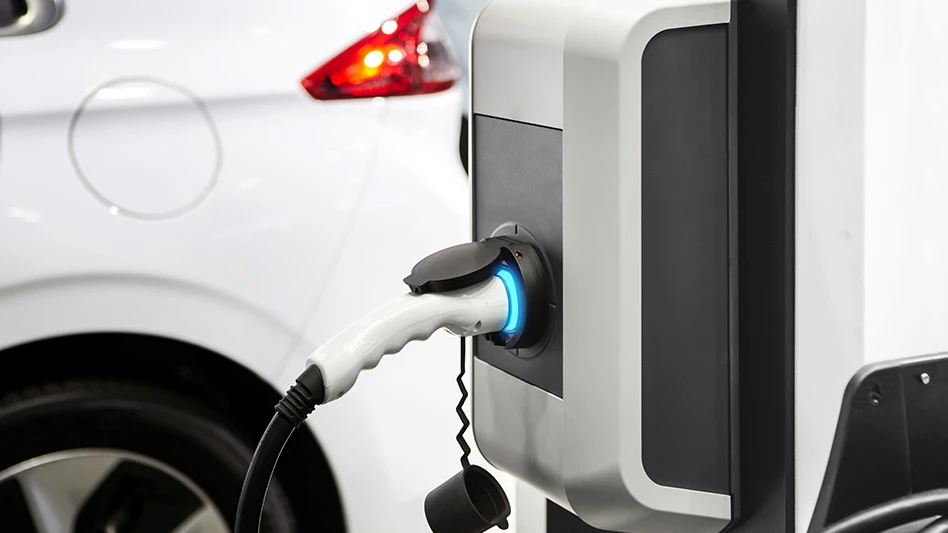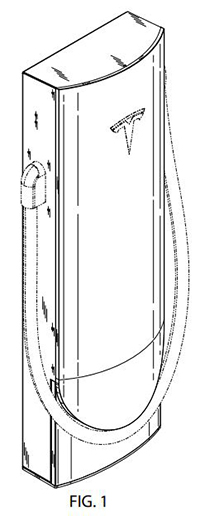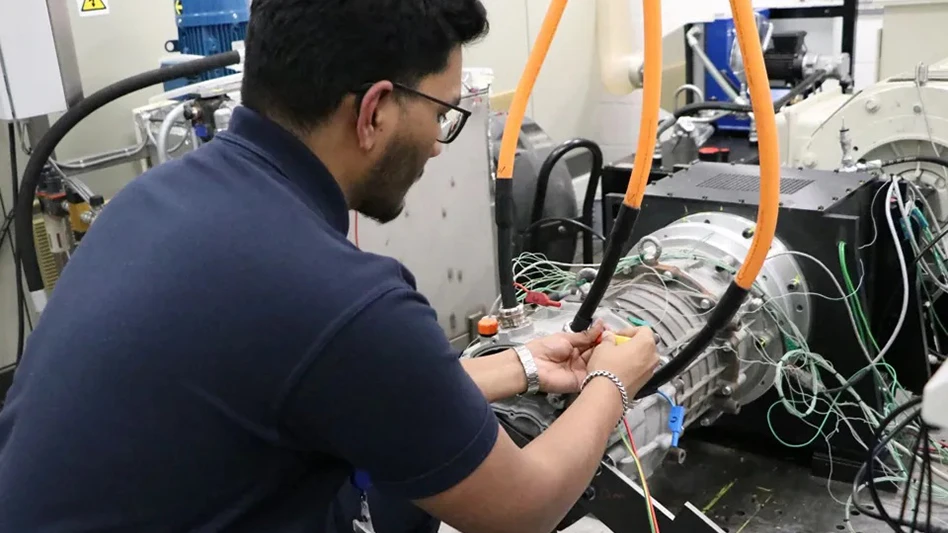
AdobeStock | 266861743

Design patents play a crucial role in protecting the aesthetic and functional aspects of electric vehicle (EV) charging stations and connectors, which are essential components in the growing EV market, and the burgeoning infrastructure supporting the same. Participants in this crowded market would be wise to protect their innovations and investments by filing for design patents directed to distinctive design elements of the products and services they offer, as part of a robust intellectual property strategy. Doing so can help such participants enhance their market position, obtain and then maintain market differentiation, and attract investors.
All EVs are equipped with a port configured to receive a connector associated with an electric charging station for the transfer of energy from the power grid to the EV’s internal battery modules. Thus, EV automakers and third parties alike are investing significant resources into the design and development of such components. Likewise, consumers and industry participants are developing recognition and expectations of those products and services based on numerous designs observed in the EV marketplace.
This article identifies several considerations relating to design patent subject matter and costs, as well as exemplary design elements relating to EV charging stations and connectors that industry participants should consider as part of their patent protection strategy.
Design patent subject matter and costs
Design and utility patents are covered by specific legal frameworks that provide exclusive rights to the patent holder. As compared to utility patents, which largely protect functional aspects of technology, design patents are directed to the ornamental appearance of articles of manufacture. And, so long as those ornamental aspects are not purely or primarily functional, design patents may also serve to protect the functional aspects of the underlying ornamental design.
In this way, design patents may be used to secure patent protection for articles, or aspects of articles, such as those outlined below, that may not otherwise be protectable by utility patents. Alternatively, where utility patent protection is available, design patents may be utilized to secure design protection, in addition to utility patent protection, to form robust multi-layered patent protection.
Moreover, as compared to utility patents, which may cost $10,000 or more in attorney and patent office fees, design patents are relatively inexpensive, typically costing well under $2,000. In this way, design patent protection can be viewed as a cheaper alternative to utility patents, while at the same time, providing a scope or protection different than, or in addition to, utility patents.
Charging stations

EV owners are well aware of the need to know where and how to recognize an EV charging station (preferably, a charging station manufactured by the automaker of their EV), especially as the battery charge and available range of their EV diminishes, and/or when traveling to unfamiliar destinations.
Charging stations are generally available in two forms: i) smaller “destination” charging stations, for example, in the EV owner’s home garage, at a hotel, or in a parking garage, where extended (e.g., overnight) charging times may be available; and, ii) larger “supercharger” stations, for example, along highways and major roads, near retail complexes, and/or at EV charging lots, where there is likely a demand for rapid charging.
Whether such stations are single-station or multi-station chargers, design patents are well-suited to protect both aesthetic and functional aspects of individual charging station elements, and/or the ornamental appearance of the station as a whole. Whether it be the form of a charging station’s external housing, inclusion of solar panels or overhead cover elements, placement of displays and controls, or the modular arrangement of multiple charging stations, such as in an EV charging lot, design patents can be formulated to cover most aspects of those designs. Among other benefits, once issued, these design patents protect against after-market copy-cats, fence off certain functional aspects that may not be protectable via utility patents, and/or restrict use of designs that consumers have come to associate with specific automakers or after-market suppliers.
Charging displays
The display and presentation of information relating to charging stations is an integral part of the EV infrastructure warranting consideration for design patent protection. For example, graphical user interfaces may be associated with a charging station and/or within a vehicle for the presentation of information relating to things like charging progress, existing battery charge and capacity, location and availability of charging stations, charging costs, and the like. Such information may be presented as a combination of text, icons, and/or images, often as a dynamic or animated display.
While design patents are typically associated with tangible articles of manufacture (like a charging station), the United States Patent & Trademark Office (USPTO) has confirmed that computer-generated images and graphical user interfaces, when properly presented and claimed, may be the subject of a design patent. For example, a display panel having a specific icon, or arrangement of icons, may be the subject of a design patent. Likewise, a display panel with a graphical user interface comprising both icons and/or text, may be the subject of a design patent. Moreover, the USPTO has confirmed that dynamic or animated aspects of such interfaces, as illustrated in the example below, may also be the subject of a design patent.

Charging connectors & adapters

Another key component in the EV charging landscape is the connector utilized to electrically link the EV and its battery modules to a charging station, typically through an intermediate cable or cord. Relatedly, separate adapters are available for converting one connector or socket type to one or more other connector or socket types.
The ornamental appearances of such connectors and adapters are likewise protectable with design patents. For example, design patents may be used to protect the ergonomics of the connector, the orientation and relationship of the connector to the connecting cable or cord, safety features, the appearance and location of structure for locking the connector to an EV, structure used to store the connector on or in the charging station, and the like. And, while care should be given to primarily functional aspects surrounding the connector sockets (which in most cases are standardized), the ornamental appearance of those features within the larger connector may be the basis of patent protection.
To the extent a market participant is innovating new and improved charging connectors and/or adapters, that participant would be wise to protect such investments with design patents, so as to prevent others from capitalizing off the participant’s investments.
Conclusion
Design patents are indispensable for the protection and commercialization of EV charging connectors and stations, offering coverage of both aesthetic and functional elements. Participants in the EV charging industry should strongly consider securing design patents to safeguard their innovations and maintain a competitive edge, especially as it relates to distinctive design elements that may not otherwise be protectable with utility patents, so as to enhance and maintain market position and competitive product differentiators.
About the author: Jacob C. Bachman is an intellectual property attorney and senior counsel at Crowell & Moring. A mechanical engineer by training, Mr. Bachman works directly with inventors and designers to devise patent protection, enforcement, and avoidance strategies, with respect to both utility and design patents. He can be reached at jbachman@crowell.com.
Latest from EV Design & Manufacturing
- Battery with built-in fire extinguishing technology moves electric vehicle safety forward
- Axial flux motor accelerates e-mobility
- MARBEL project develops modular, eco-friendly electric vehicle battery
- ChargeTronix releases distributed EV charging system, third-generation chargers
- US electric vehicle sales start off strong in the first quarter of 2025
- SES AI launches battery material discovery software and service platform
- ChargePoint develops high-speed AC Level 2 electric vehicle charging capabilities
- Vibracoustic designs air springs suited to electric pickup trucks





